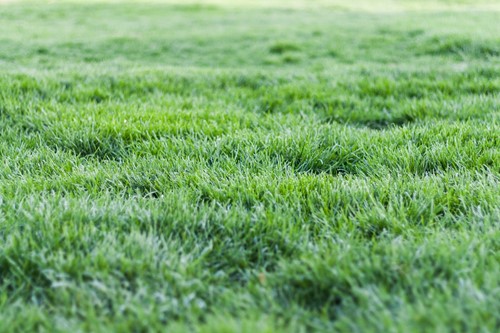
Knowing how to care for your lawn means knowing how and when to fill in gaps with grass seed. Fescue grass is a popular variety of perennial lawn grass that, despite being tolerant of many climate zones, is prone to brown patches during hot, humid summer months. Using grass seed effectively is the best way to remedy the situation.
However, the more you know about different types of fescue grass seed, the better results you’ll have. Here is some more information about growing this cool-season grass to help:
Types of fescue grass seed
Fescue grass comes in several varieties suited for different situations.
Tall fescue grass is a popular choice for high-traffic areas like sports fields and commercial sites. It’s durable, shade-tolerant and has a deep root system to keep it healthy during dry periods. Because of its coarse appearance and clumping growth pattern, tall fescue grass seed needs to be applied evenly to ensure a uniform lawn aesthetic.
Creeping red fescue grass is characterized by fine, delicate blades and deep green color. This type of grass seed is often added to fescue seed mixes to improve shade tolerance.
Hard fescue grass, like tall fescue grass, is used in high-traffic areas because of its durability. The most common application of this variant is in golf courses.
Overseeding
Fescue is widely used as a “turf” grass, but its natural growing pattern can make it tricky to achieve an even lawn. Adding more grass seed to sparse patches of your lawn can help improve the health and appearance. This practice is called “overseeding.”
Fescue grass seed can take several weeks to germinate, and grows slowly once established. While fescue requires patience and regular maintenance, it can be a perfect grass choice for your home lawn or garden.
About the Author

Bob Hummer
Bob Hummer brings a wealth of experience with him; a practitioner in real estate in Northern Virginia since 1978, a Life Member of both the Million Dollar Sales Club and the Top Producers Club with over 2,500 Satisfied Families and President, Prince William Association of REALTORS in 1991. His experiences range from helping buyers and sellers attain their goals; to renovating historic homes on Capitol Hill; to counseling and assisting homeowners facing the loss of their home due to foreclosure. Since 1996, he has presented his free monthly Home Buyer and Home Seller seminars at the Woodbridge campus of Strayer University. In June 2023 he completed the Certified Probate Real Estate Specialist course and was awarded the designation CPRES. His goal is to assist individuals who inherited real estate and wish to sell. A former "Military Brat" and a retired Air Force Hospital Administrator, Bob has made more than 26 moves during his life and is extremely familiar with all aspects of a family relocating - whether it is across the street or across the nation.